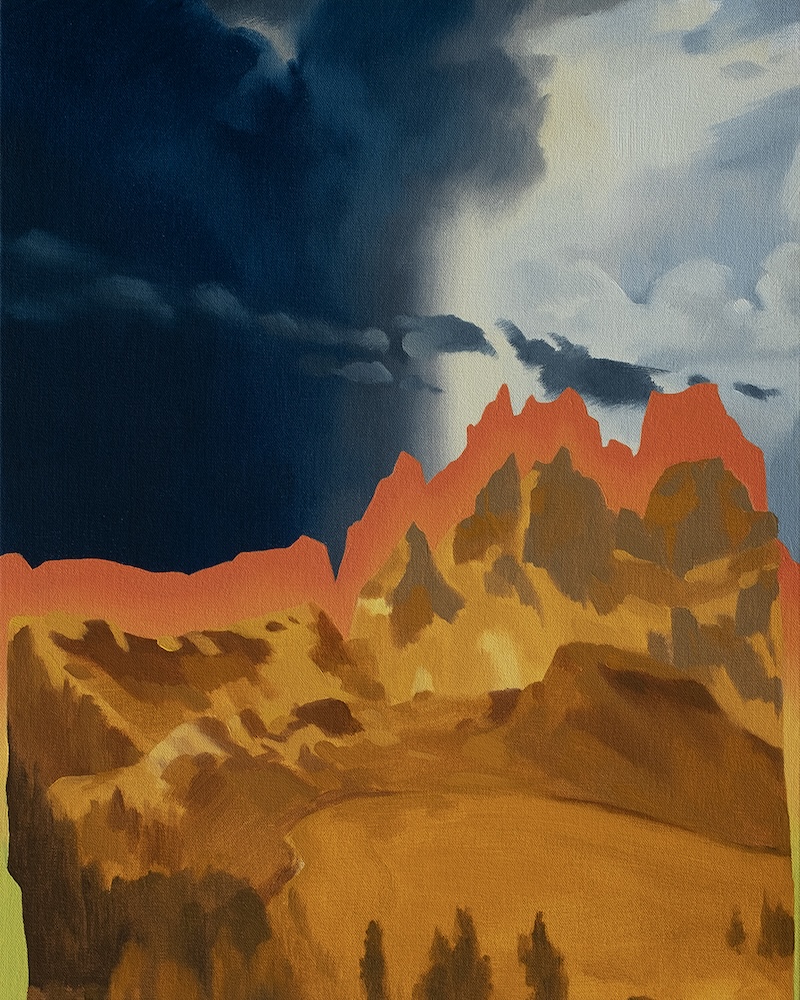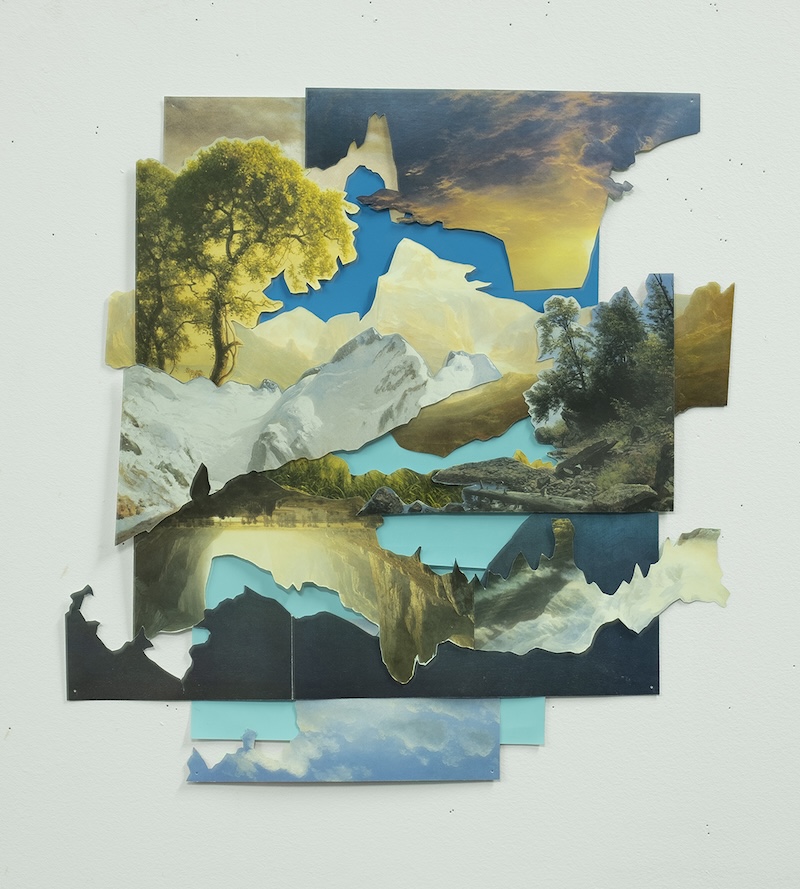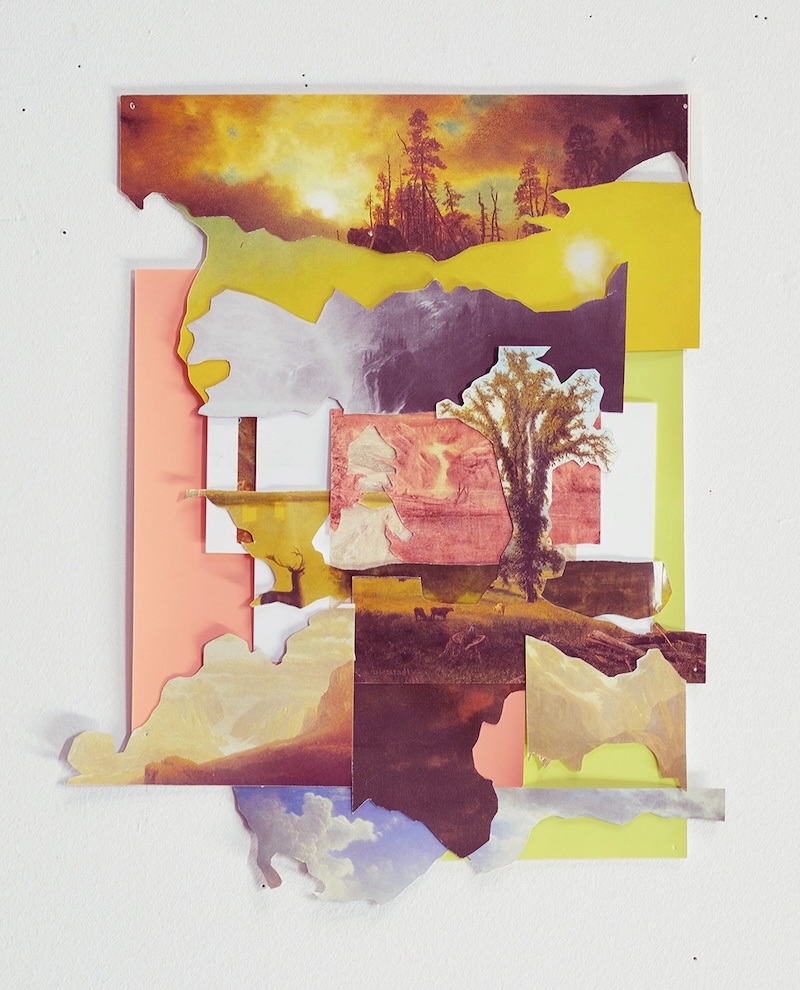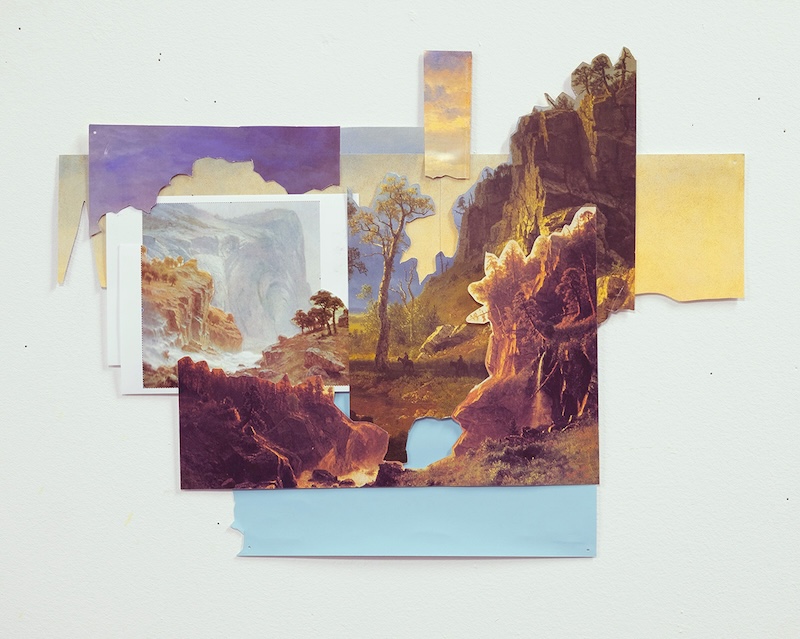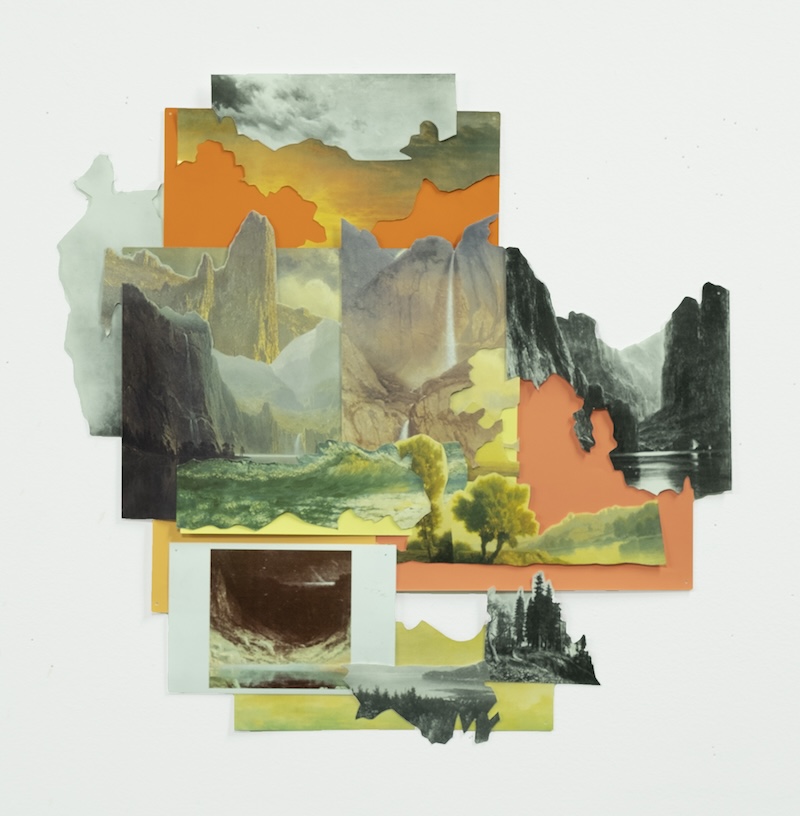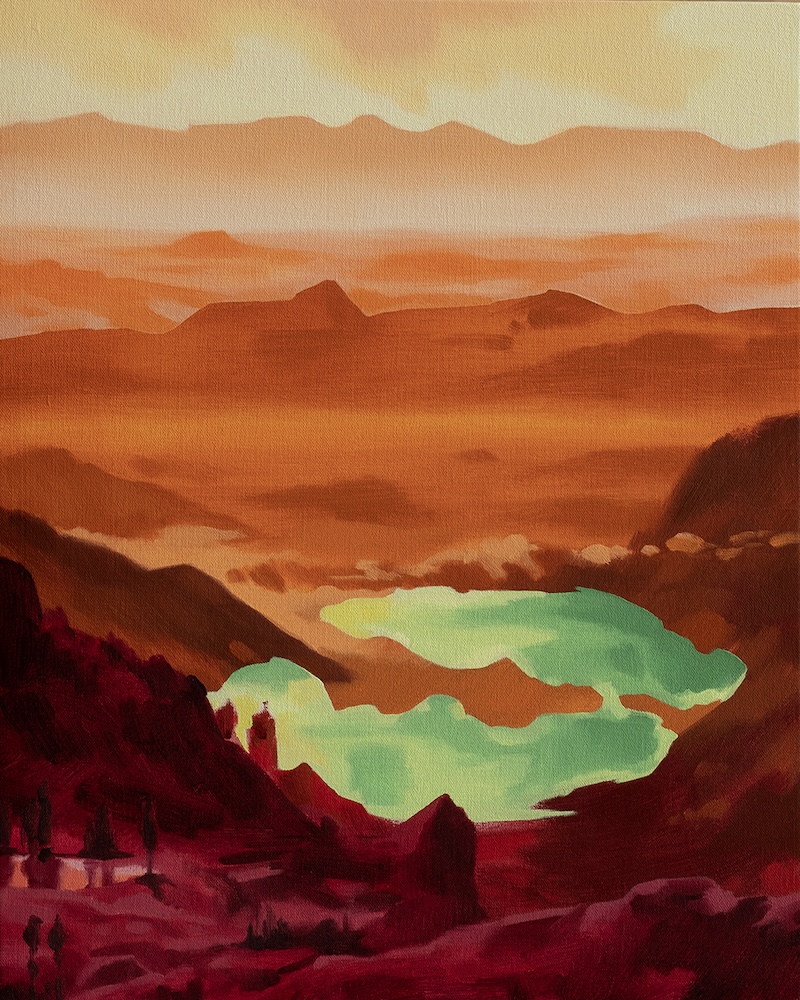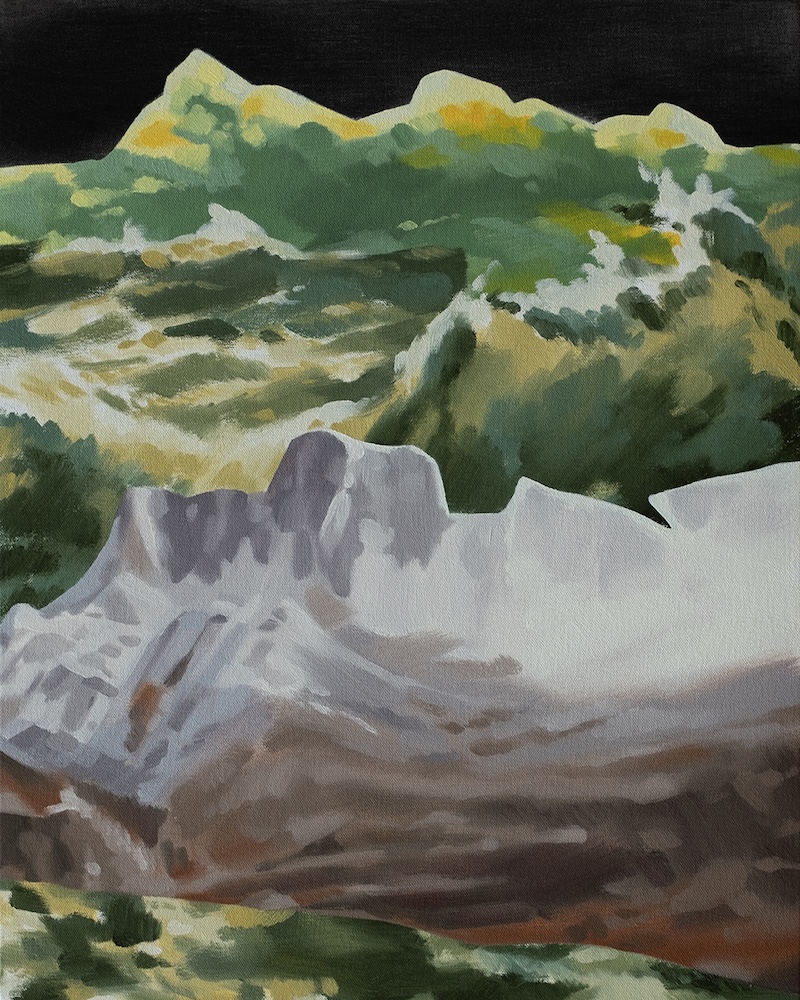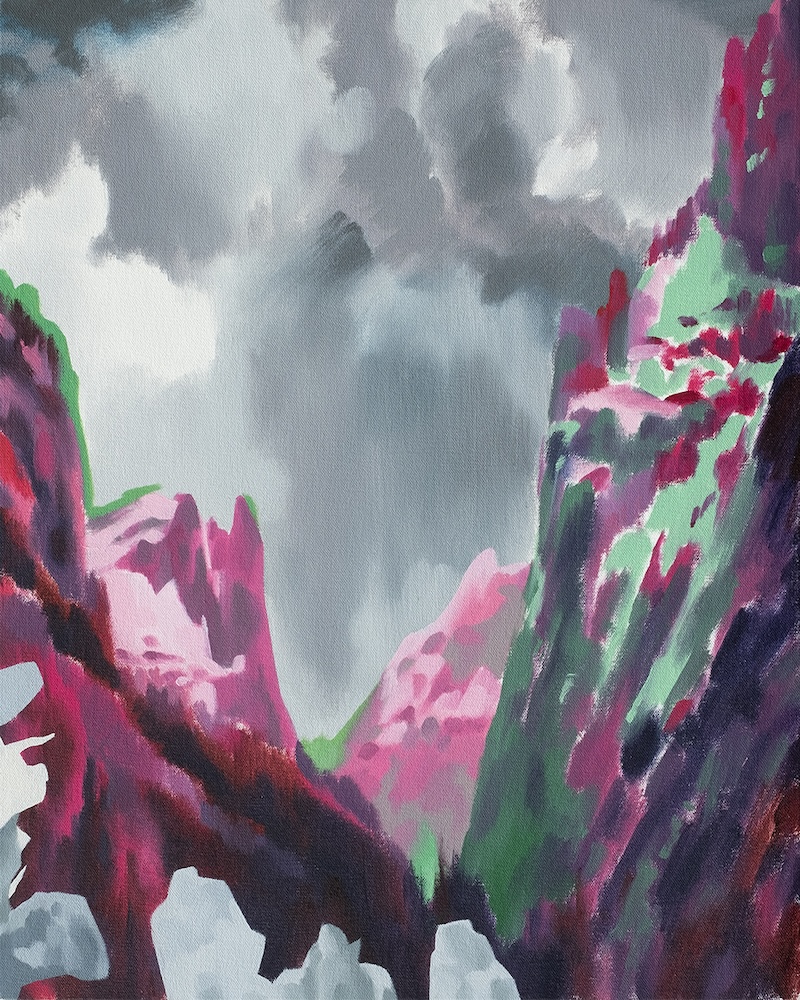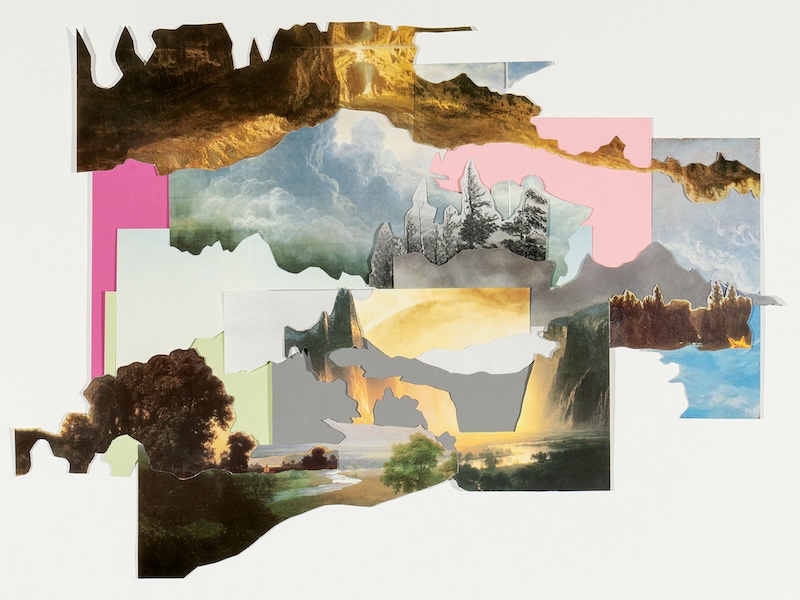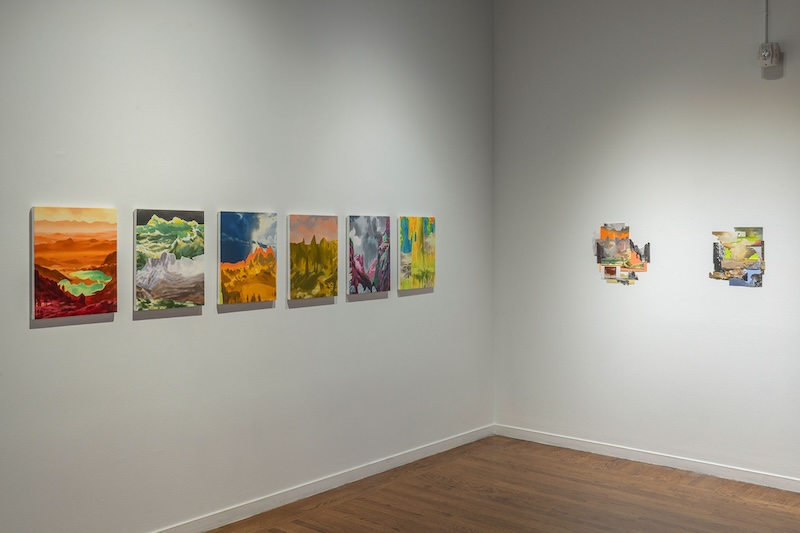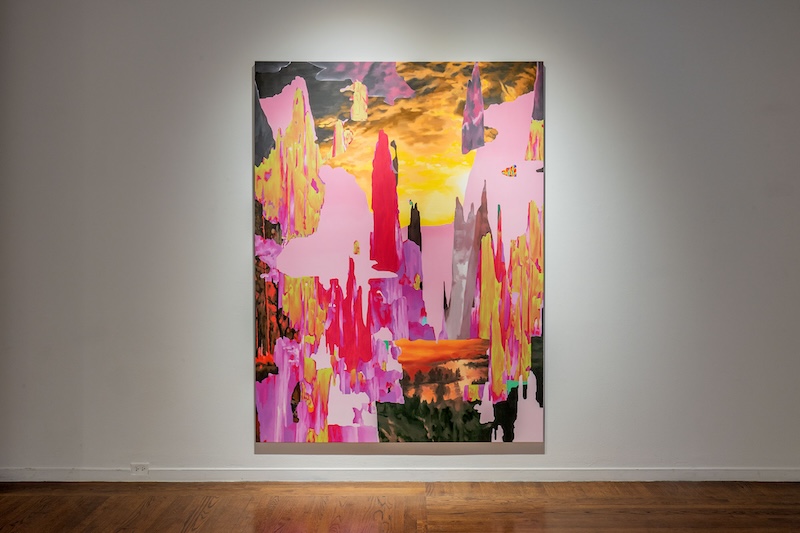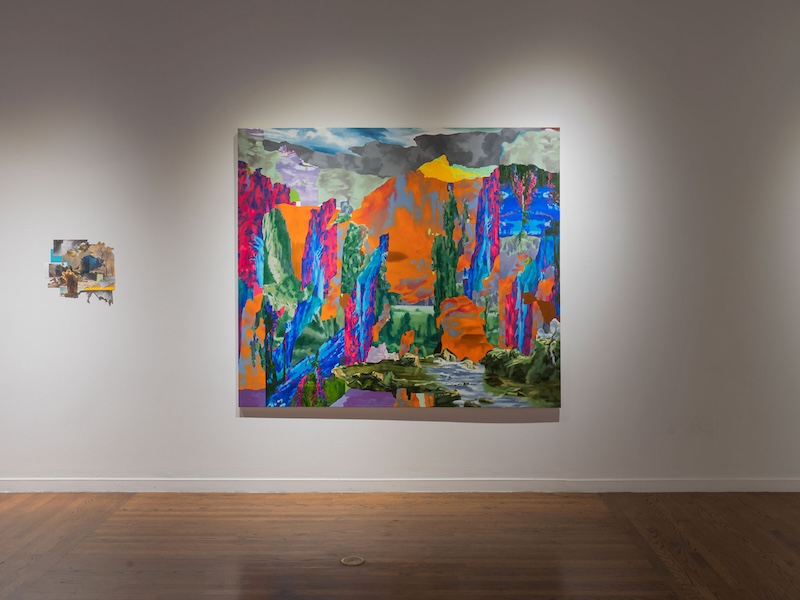The American Western landscape has often been depicted as a vast unknown – its seemingly endless peaks and valleys weave together histories of anticipated exploration and claiming unsettled property. Early 19th century Romantic painters, such as Albert Bierstadt, were amongst these settlers and depicted this Western landscape through glorified, composited versions of American spectacle, absurdity and desire.
Jerrin Wagstaff is a contemporary artist who has been inspired by such 19th century concepts of the untouched, unexplored wilderness that was marked as America’s for the taking. Wagstaff is an artist based in both Salt Lake City, Utah and Los Angeles, California. Upon receiving his BFA from Brigham Young University and his MFA from California State University, Wagstaff has focused his practice on the landscape as a means to discuss American ideals, politics and identity.
“The conquest of this landscape reinforced ideas about American exceptionalism, rugged individualism and the belief that nature was not only God’s creation but also something to be conquered and exploited as a resource,” explains Wagstaff. “Fast forwarding to the 2020’s, you don’t have to look too far to see how these beliefs have shaped ideas about America and framed the current discussion surrounding politics, religion, social interactions and the environment.”
Wagstaff’s most recent body of work, titled American Landscapes, composites the imagery of Bierstadt and other Romantic painters. In the origin of this project, Wagstaff began by sifting through old books and photographs of the landscape and piecing them into theatrical, colorful collages – these lived as the compositions of his earlier paintings.
“Collage is interesting to me because of the way it mimics the process of creating super landscapes from multiple sources, similar to Bierstadt. More importantly, I value collage because of all the ways I can deconstruct, manipulate, and reassemble an image,” says Wagstaff. “This act of deconstruction is a metaphor for the way that American mythologies are being called into question, examined and reconstructed today.”
The work evolved during the COVID-19 pandemic, and as the world of technology became ever-present, Wagstaff became inspired by the alignment of contemporary and romantic ideas –– spectacle, absurdity and desire being the three key themes. While he considered the concepts of presenting the glorified landscape to 19th century settlers, Wagstaff found the same to be true in the online world. The collages then became sketches and standalone works of art as Wagstaff began composing his oil paintings with Photoshop and AI technology.
The color in Wagstaff’s paintings reflect his three themes of American Romanticism. When he introduces colors that are overly intense or manipulated, they play into the spectacle of the painting and also set up an interesting quandary for the viewers: They clearly know that the color is not natural and therefore undermines the integrity of the landscape and the painting. But it is also very attractive.
“[Does the viewer] approach the painting from a critical standpoint and focus on the absurd nature of the painting, or do they allow themselves to be swept up by the romantic nature of the color? Or, can they allow themselves to do both?” says Wagstaff. “I see this as a parallel to one of the most fascinating questions about being an American today: How do each of us choose to reconcile the emotional and intellectual responses we have to our history and the current moment?”
American Landscapes, similarly to modern day technology, is continuously evolving and adapting. As Wagstaff further envelops himself in this colorful amalgamation of Romantic and contemporary iconographies, he uncovers new avenues yet to be explored –– much like the early American West.
https://utahmoca.org/exhibition/jerrin-wagstaff-american-landscapes/



